Power overwhelming
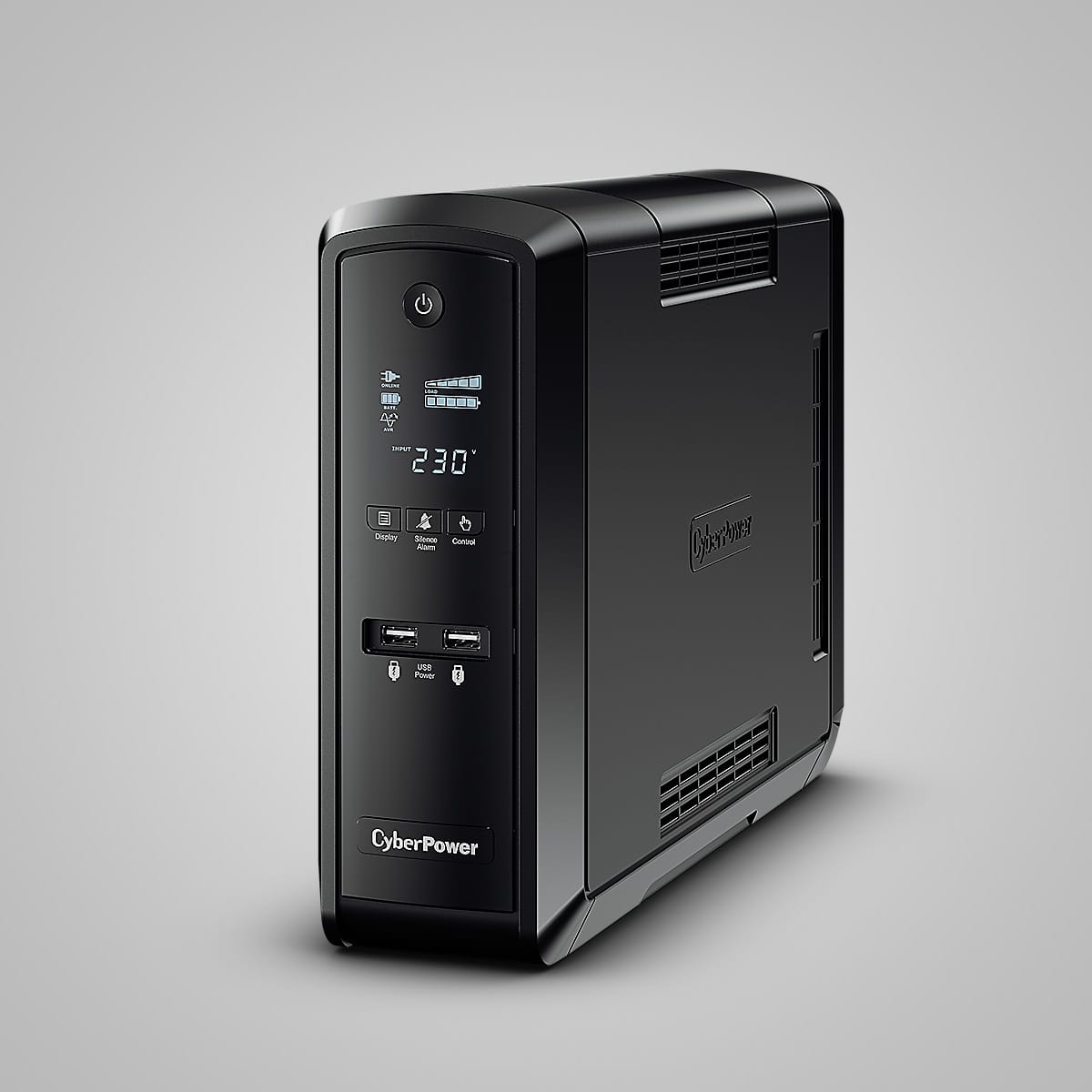
UPDATE 31.03.2020 - added information at the end of the article on UPS network configuration with multiple NAS devices using the same UPS
The day has come to power on 1st RS3614 unit. Got myself a 1KW UPS from CyberPower (CP1500EPFCLCD).
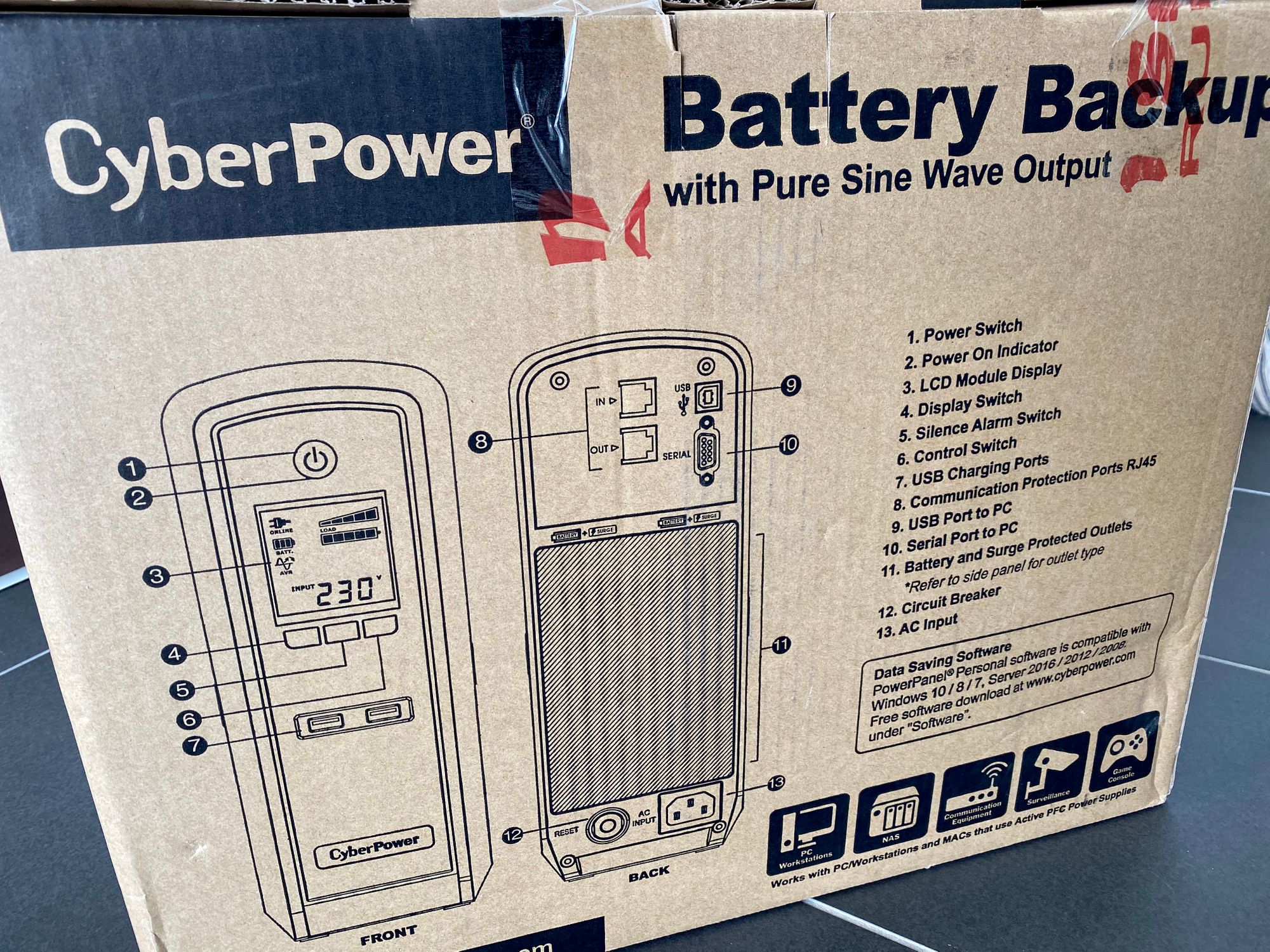
Considering that each RS3614 with 12 drives (HDDs at 7200 RPM) use about 180W on average with 200W max (per PSU), both RS3614 and their RX units will have more then enough juice.
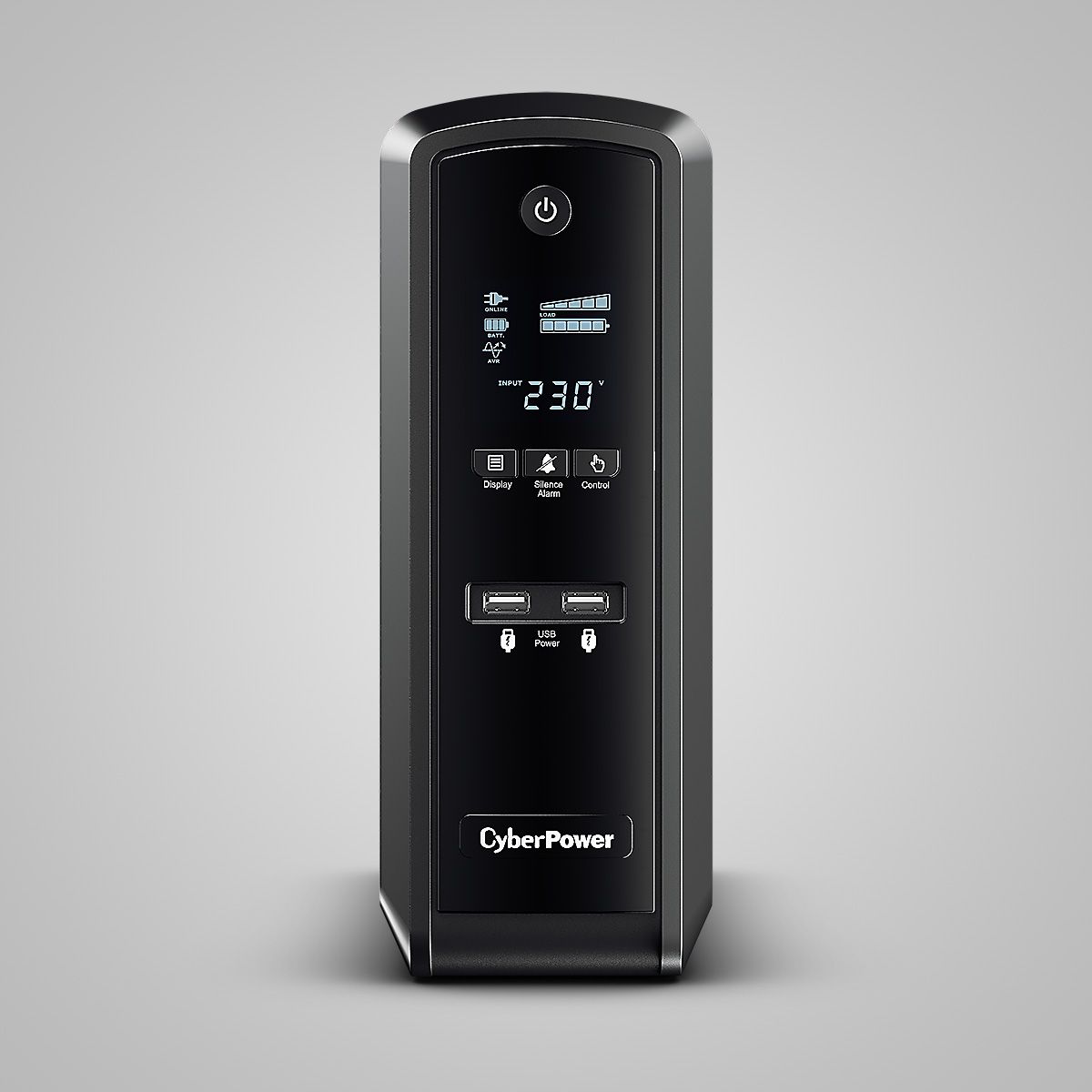
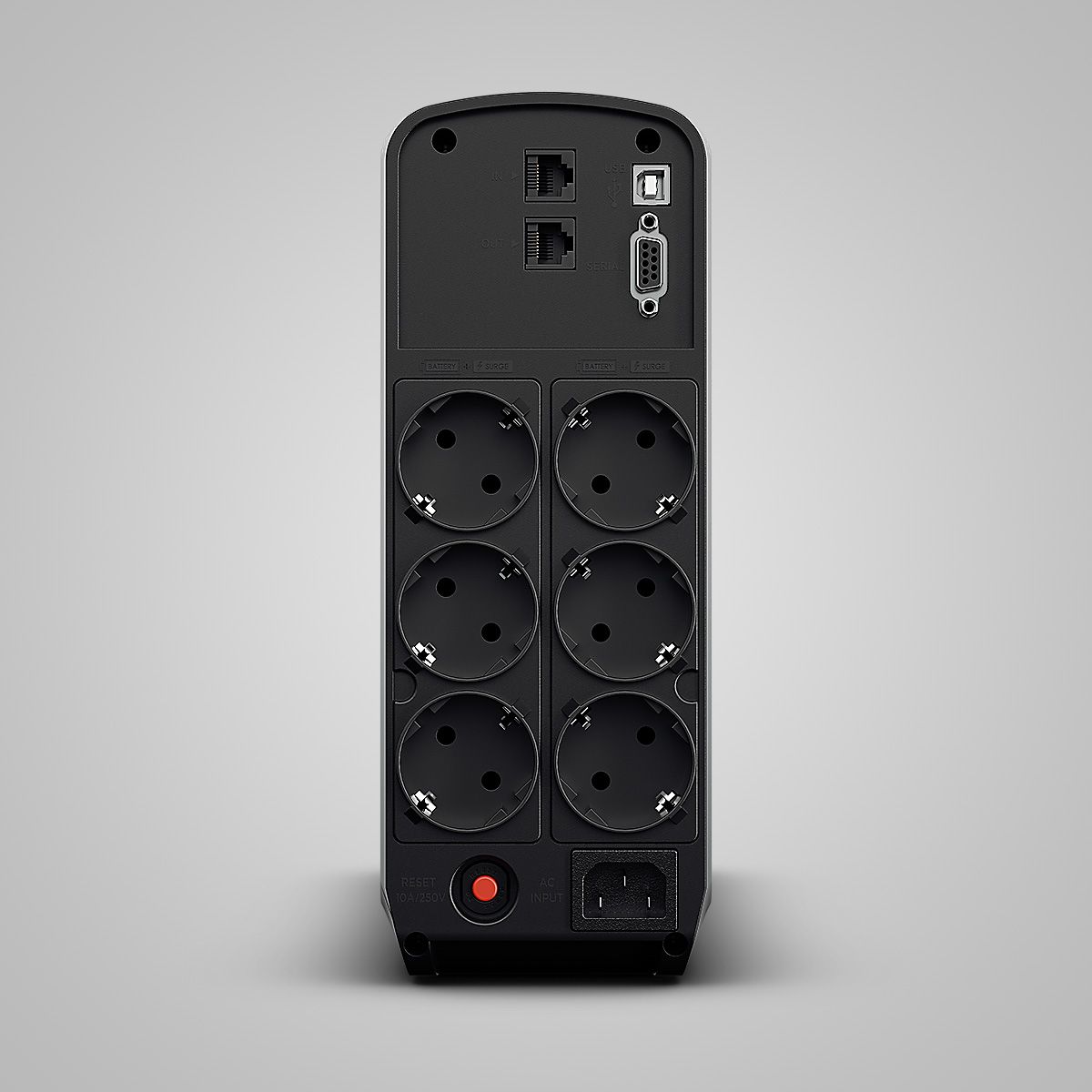
Happy so far with this UPS. Uptime with one RS running at the moment is about 40min, so no problem there. In the near future I will utilize 2 more units and still have about 20min uptime under 50% load.
On top of all this, data migration from DS918 to RS3614 has started. Took about 2 days to move about 10TB of data. Started to migrate Docker farm as well using Snapshot replication.
With Snapshot, migration is down to matter of minutes of downtime. Export JSON file from a container, import it and at the same time have both docker volume folders in sync using Snapshot tool. All that is left is stop/star for a container and boom, up and running on the new Docker host.
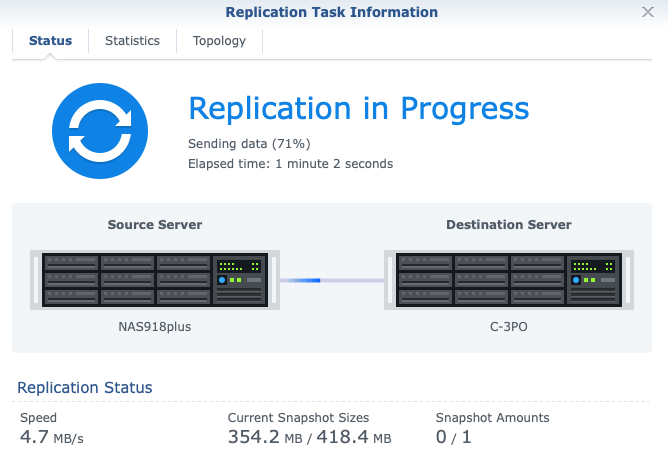
Next step in this project is getting more ECC Rank1 ram considering that 918 will be striped down and become all SSD NAS. To do that I need to migrate all roles and features to DS718 and this RS unit first. So RAM and SSD are my next items in the basket.
All in all, I will get about 70TB of HDD space and about 2TB of all flash storage across all NAS units. 412+ model on a remote location will be retired.
UPDATE 31.03.2020
Today I got around to finally do a quick reconfigure regarding my NAS UPS configuration inside my rack.
Considering that CyberPower UPS is not a network supported device but rather connected to one of my RS3614 NAS (and getting info via a USB cable), the question was what to do regarding remaining NAS devices in the same rack (and on the same switch).
Looking at the documentation for Synology UPS support, there is a SNMP and network UPS support (depending on the model). Because I have multiple RS and DS units in the same rack and only one is connected via USB cable to the UPS itself, questions is how to link other devices to get the benefit of turning off when UPS will be at its battery end.
In this case the NAS with the USB cable connection can act as a network UPS server and all the other devices can act as clients connecting to the servers IP address.
Only thing needed here is to go to your main “server” NAS Control Panel > Hardware & Power > UPS and turn on “Enable network UPS server”.
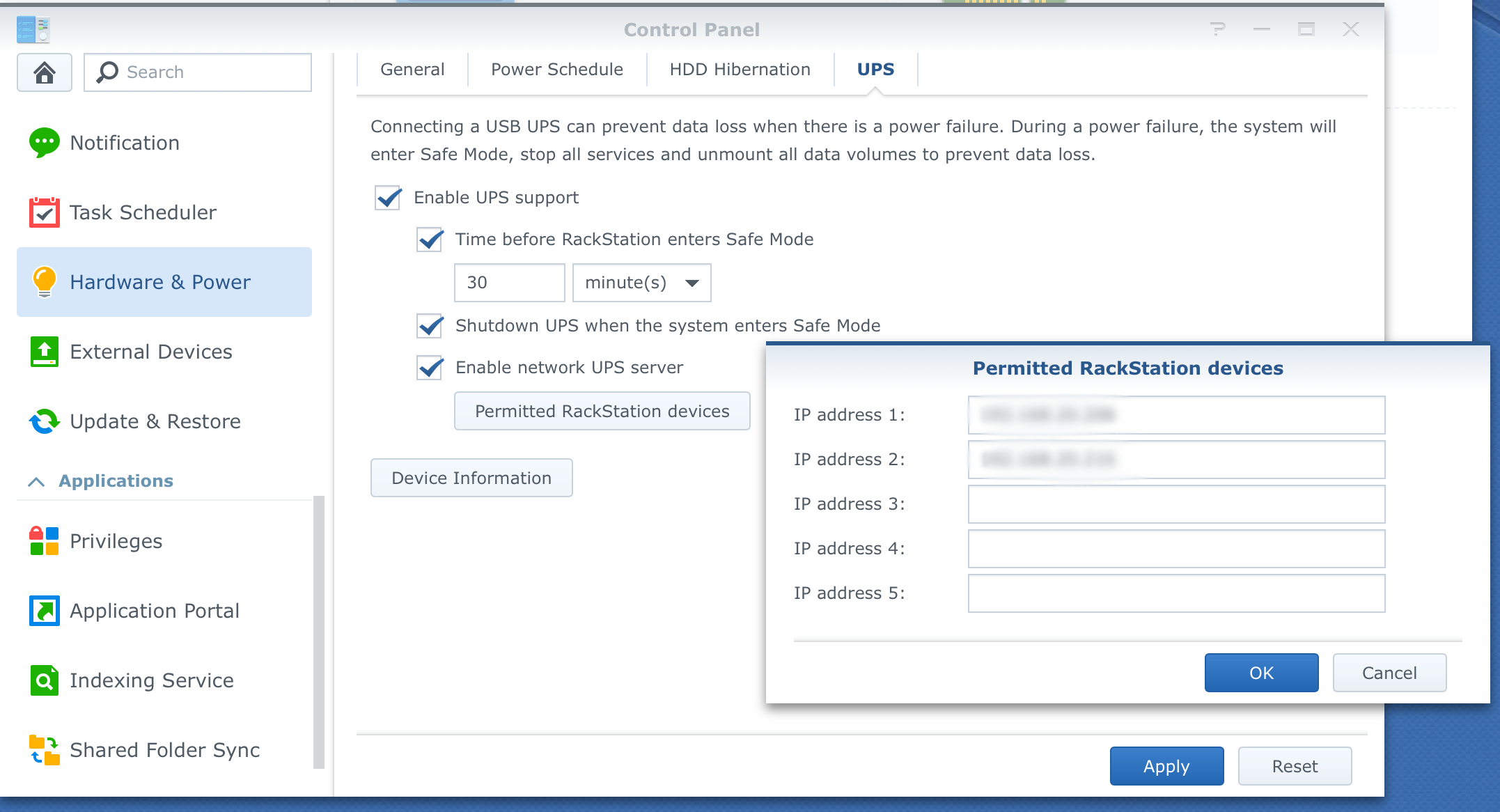
After that click the “Permitted Rackstation devices” button and in the list (a total of 5) enter your client IP addresses, and apply the setting.
Finally, log into your “client” NAS (the ones that are not connected via a USB cable) and go to the same UPS tab in Control Panel. The settings here will be a bit different.
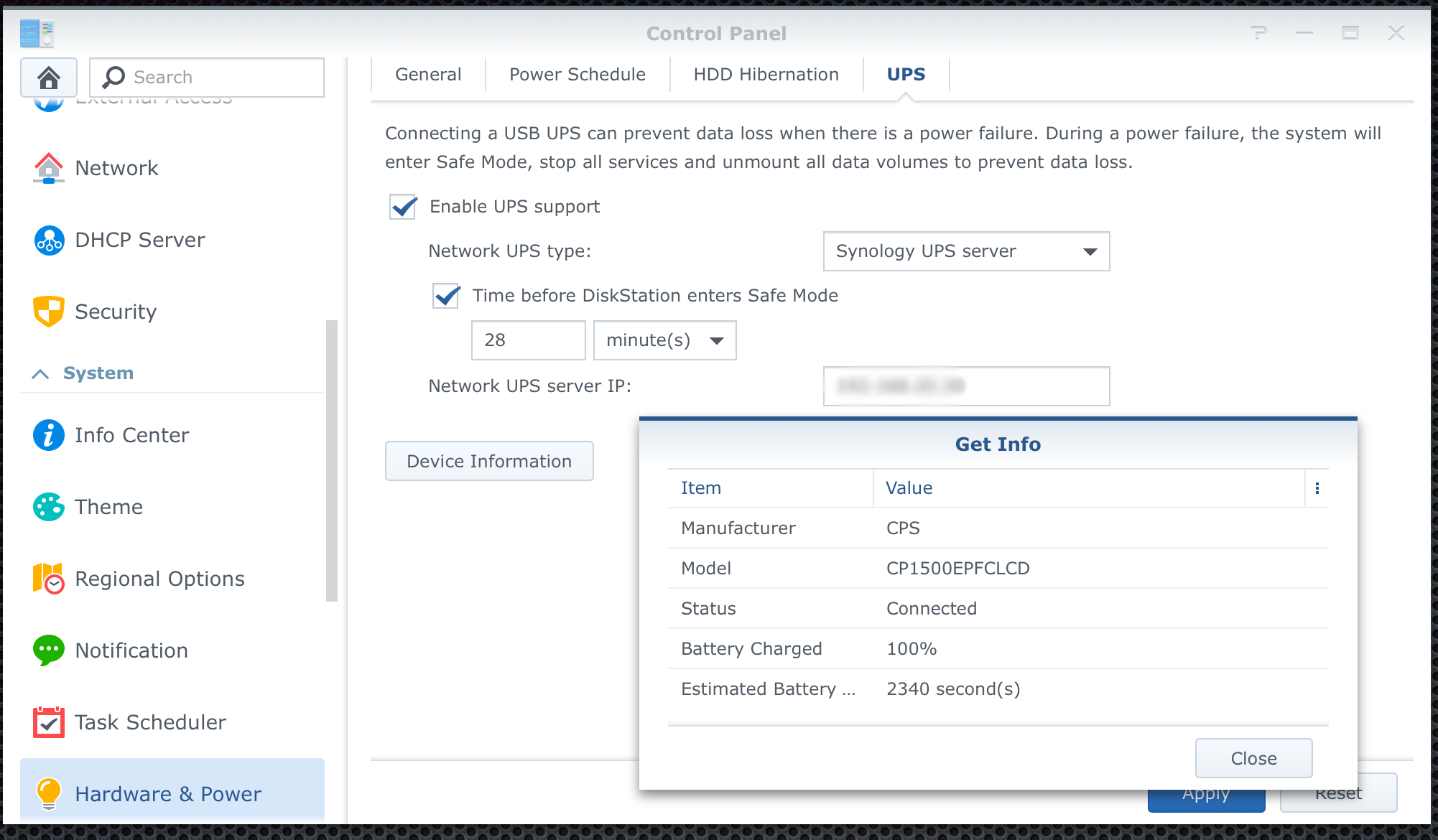
Here, from the Network UPS support dropdown menu, select “Synology UPS server” and after that in the Network UPS server IP field, enter your main NAS IP address (the one acting as your UPS server). Click Apply and wait for the confirmation. If you have configured everything as instructed your client NAS should get Device Information button that will report information from your UPS.
Only thing left to do is to check the “Time before Rack/DiskStation enters Safe Mode” option and enter the time in seconds/minutes/hours after your UPS has entered battery mode how much time must pass before your NAS enters Safe Mode. In Safe Mode your NAS will then initiate a soft shutdown and turn itself off.
One note here. Keep in mind that this method will work only if two conditions are applied as stated in the Synology article:
Network UPS Requirements:
- To relay UPS device information, each Synology NAS should be connected to the same network.
- The network device (e.g. switch or hub) to which each Synology NAS is connected should be plugged into the same UPS device. Otherwise the Synology NASs will not be able to relay UPS device information when power failure occurs.





